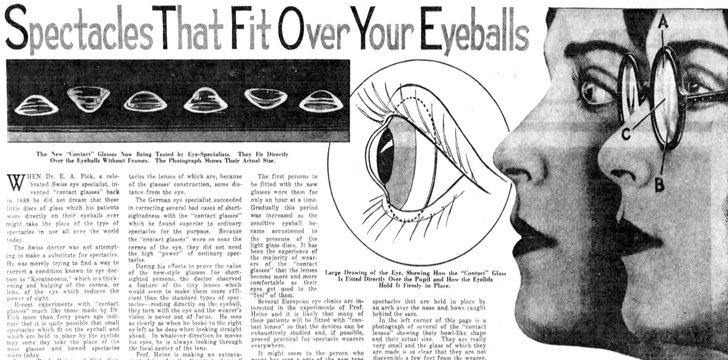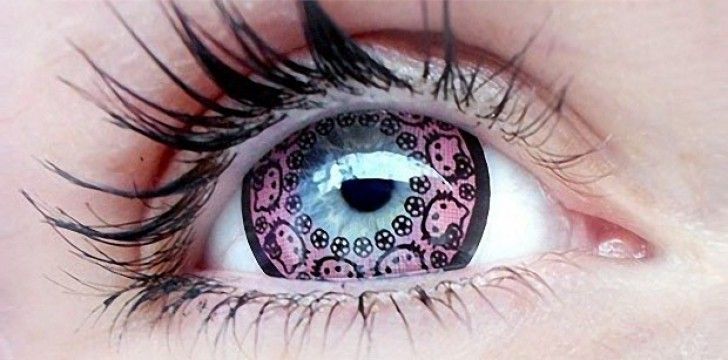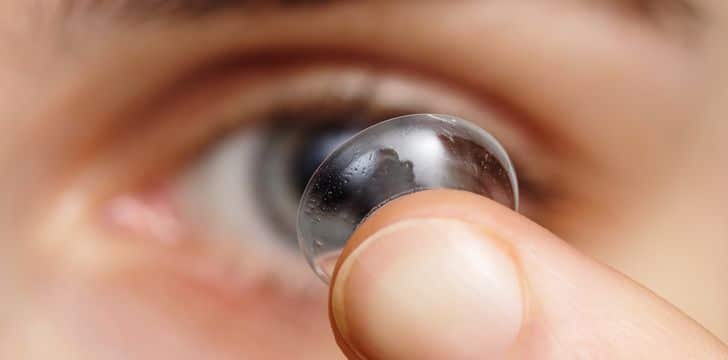The idea of a contact lens as a visual aid first started to seem like an amazing idea in 1508.
Like many of this time’s revolutionary and forwardly-thought ideas it was the intellectual property of inventing boss-man Leonardo Da Vinci.
Da Vinci described a method of directly altering the corneal power of sight by either submerging ones head in a bowl of water, or by wearing some form of water-filled glass hemisphere over the eye.
However, this proved to be sadly impractical like many of Da Vinci’s other inventions (e.g. the helicopter), due to the age in which he lived in.
Contact Lens Development.

Further down the line in 1636, French philosopher René Descartes proposed the idea of a glass tube filled with liquid to be placed in direct contact with the cornea.
The protruding end of this tube was to be composed of glass and shaped to correct vision.
This proved to be impractical too, as the ungainly size and shape of it prevented the wearer from blinking.
Fast forward to 1887, Germany, where German glass-blower F.E. Muller produces the first ever eye covering to be both seen through and tolerated by the wearer.
A year later, in 1888, German ophthalmologist Adolf Fick – working from Muller’s findings – constructed and fitted the first contact lens from blown glass.
Although uncomfortable, and only able to be worn for a few hours at a time as it was worn over the entire eye, this is the true breakthrough in contact lens technology.
In 1949, the first corneal contact lens is developed and soon becomes popular, becoming an object of mass appeal by the 1960’s.
The Modern Day Contact Lenses.

The modern-day contact lens works by resting on the wearer’s cornea, the clear outer surface of the eye.
The lens is held in place primarily by sticking to the tear film that covers the front of the eye, but also secondarily by pressure caused by eyelids from blinking.
As the wearer blinks, their eyelid glides over the surface of the lens, thus moving it slightly.
This movement allows the wearer’s tears to provide the necessary lubrication to the cornea and also helps flush away any debris between the cornea and the contact lens.
Contact Lens Functions.

Contact lenses have two main functions: medical uses and aesthetic uses.
However, due to the mild and sometimes serious optical complications contact lenses can bring, all types of contact lenses are classified as medical devices.
Medically speaking, contact lenses are often used to correct sight disorders such as myopia, hyperopia, astigmatism and reading problems.
These conditions are caused by light not being properly focused upon the retina, causing vision to be blurred or impaired.
When placed on the cornea, a contact lens functions as an initial optical element for the eye in picking up light.
These optics combine with the optics from the eye to properly focus the light resulting in cleared vision.
Contact Lenses in Movies.

Due to the way in which contact lenses can be used to dramatically change the appearance of an individual’s eyes they see a wide use in the Film and TV industry.
Some of the more notable uses of contact lenses within films are the blood-red eyes of Rage Virus victims in 28 Days/Weeks Later.
Contact lenses were also used widely across the Star Wars saga of films as well as in the Riddick films (Pitch Black, Chronicles of Riddick).
Contact Lenses were also used to give the characters of the film Avatar different colored eyes, too.
Future Concepts for Contact Lenses.

One possible future use of contact lenses is that of bionic contact lenses – a concept not unlike that of Google Glasses.
This specialized type of contact lens is currently under development, being trailed as a prototype in Seattle, America.
The lens itself is made up of organic materials that are biologically safe and features electronic circuits built from a layer of metal only a few nanometers thick.
Currently, the device can only work within a few centimeters of its crude wireless battery and only features a single-pixel display.
However, this is just another stepping stone for contact lens technology which could potentially take Da Vinci’s rudimentary idea and thrust it into the future of mass-media.
So who knows, give it a decade (most probably less given how rapidly technology moves these days) and we could all be reading The Fact Site through our own bionic contact lenses!


















